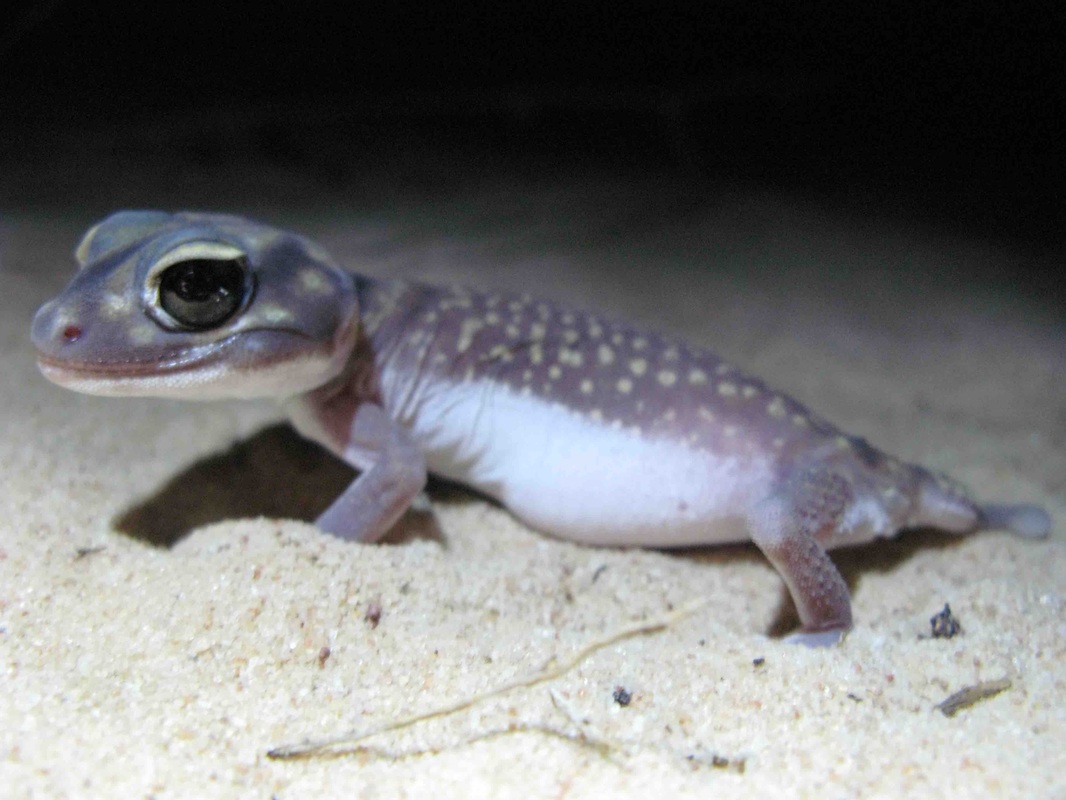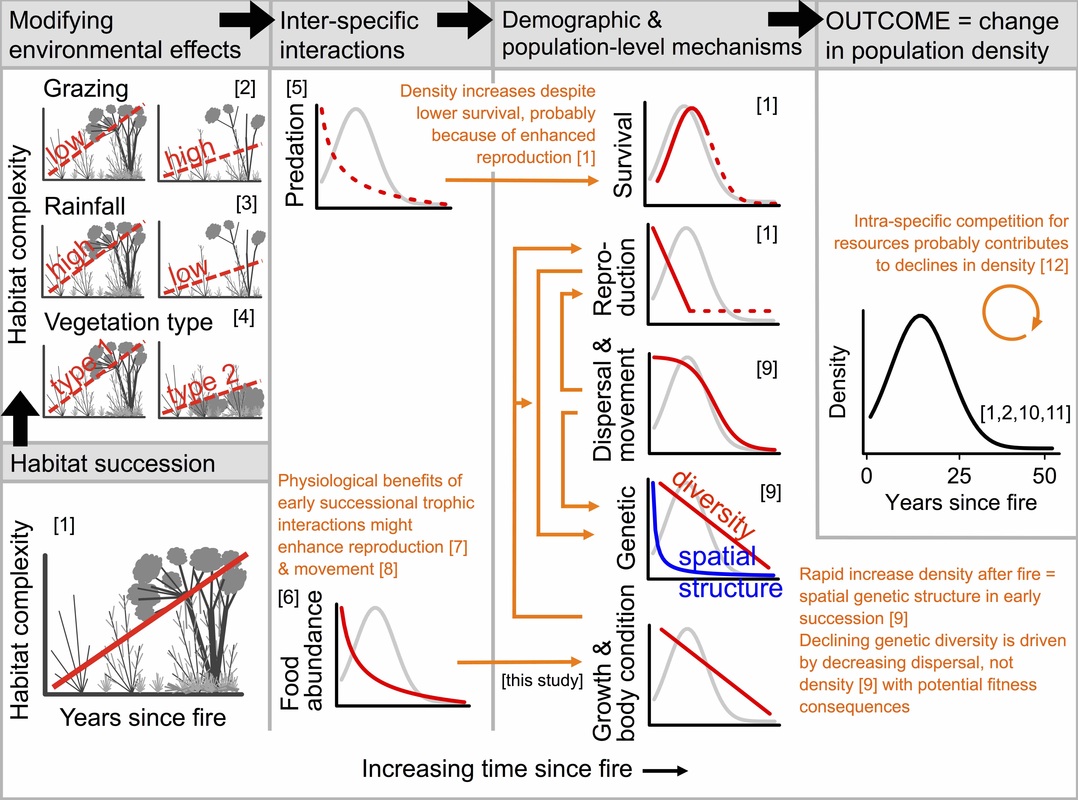November 2017: Traditionally, scientists tried to explain animal responses to fire by measuring changes in habitat structure, but complex creatures rarely follow simple habitat-based rules. My new paper in Oecologia presents a mechanistic model of post-fire population dynamics based on a decade of demographic and genetic research. The protagonist is the early-successional knob-tailed gecko, Nephrurus stellatus, a model species for fire ecology.
I presented new data showing how increases in invertebrate food during early succession made geckos grow faster and have higher body condition scores. This means that changes in trophic interactions could drive rapid growth in gecko density by contributing to previously reported enhanced reproduction and dispersal. Keep reading...
Smith AL (2018) Successional changes in trophic interactions support a mechanistic model of post-fire population dynamics. Oecologia, DOI: 10.1007/s00442-00017-04016-z. Read online.
I presented new data showing how increases in invertebrate food during early succession made geckos grow faster and have higher body condition scores. This means that changes in trophic interactions could drive rapid growth in gecko density by contributing to previously reported enhanced reproduction and dispersal. Keep reading...
Smith AL (2018) Successional changes in trophic interactions support a mechanistic model of post-fire population dynamics. Oecologia, DOI: 10.1007/s00442-00017-04016-z. Read online.

